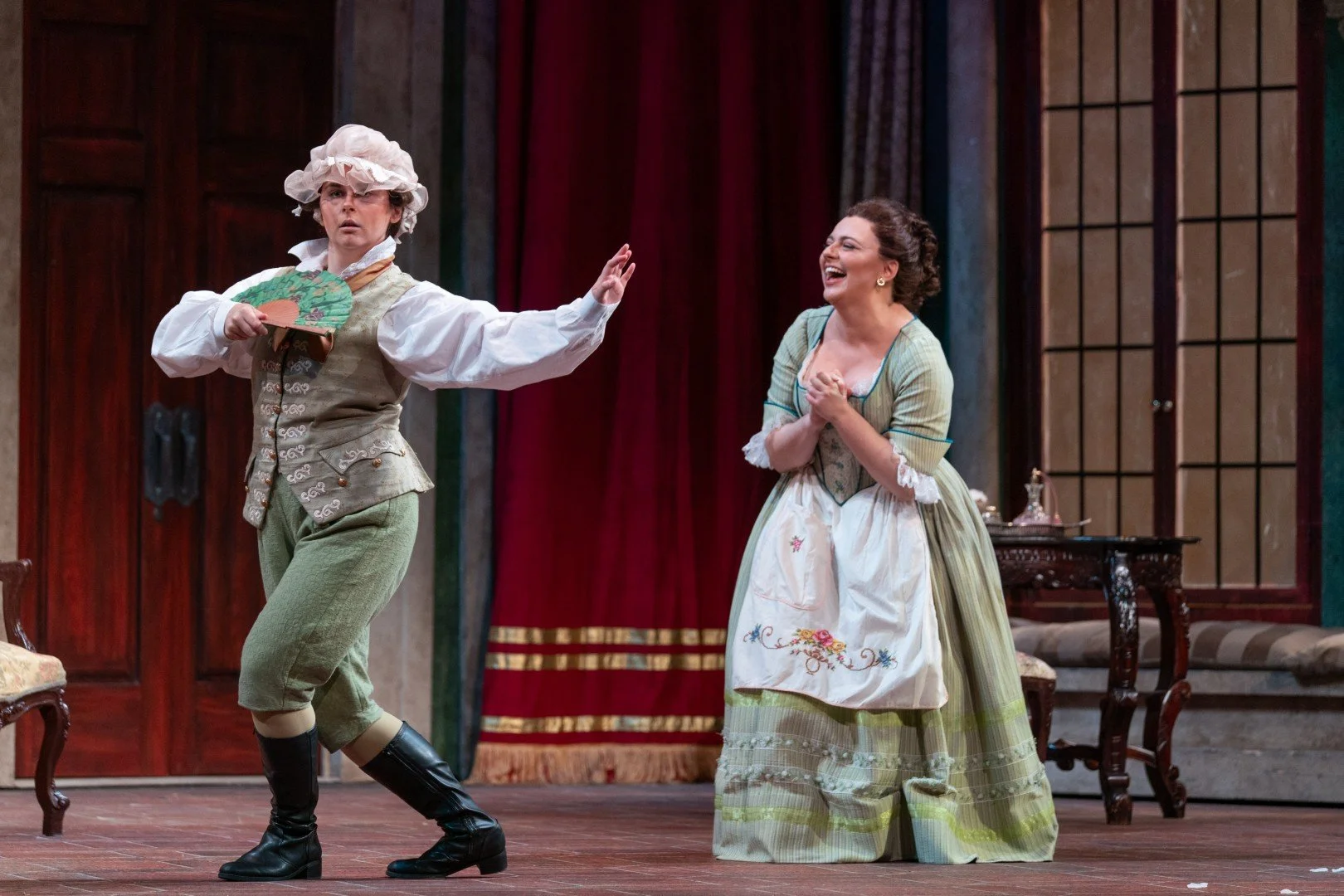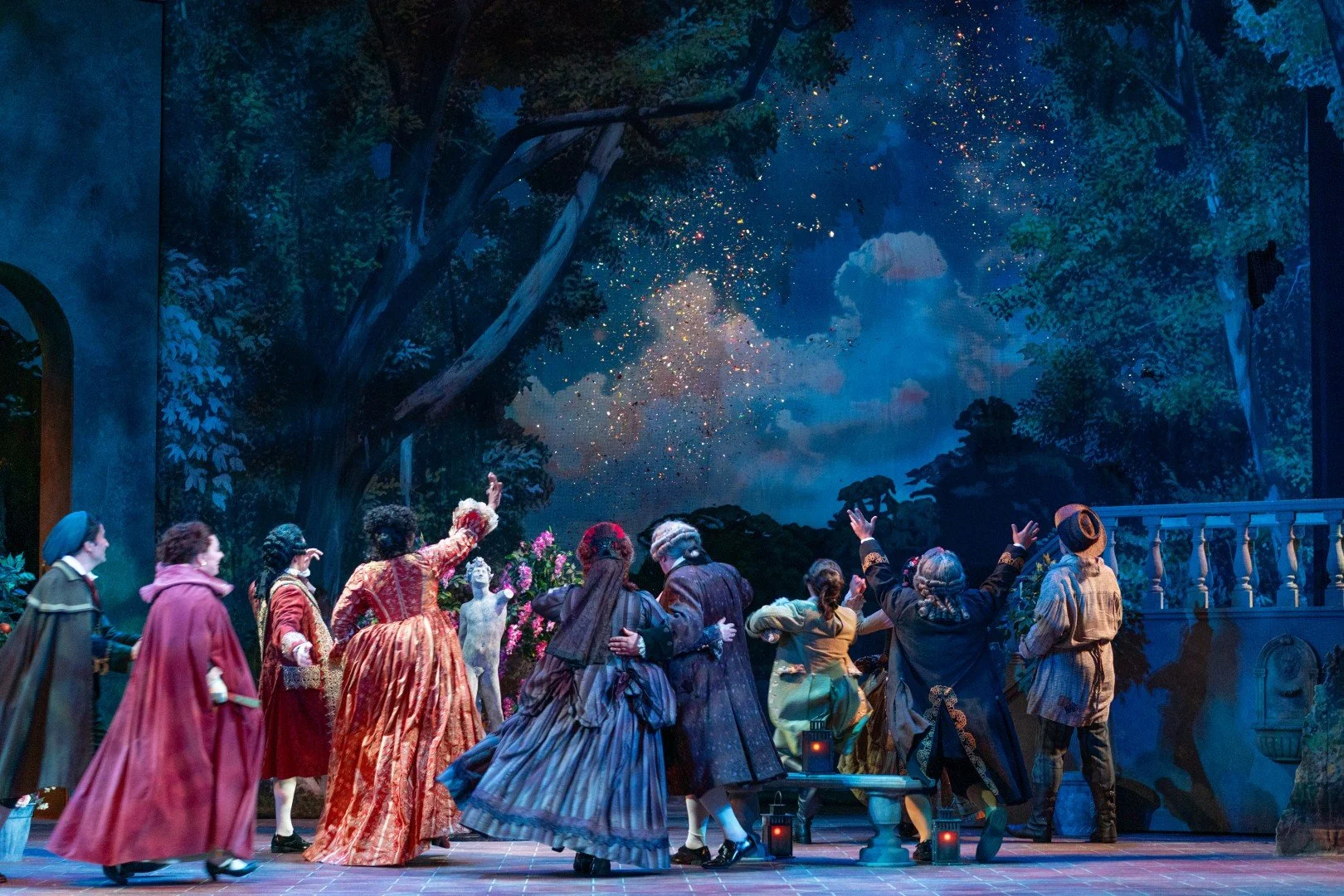Sarasota Opera, Follow the Verdi Trail
/By Truman C. Wang
3/25/2025
“A Rich Operatic Legacy”
Founded in 1960, the Sarasota Opera Company has long been a jewel of Florida's ‘Cultural Coast.’ Originally established as the Asolo Opera Guild, the company has evolved from modest beginnings to become a significant national opera institution. The historic opera house, located in downtown Sarasota, was originally constructed in 1926 as the A.B. Edwards Theatre, a magnificent example of Mediterranean Revival architecture.
1984 saw the first-ever opera staged at the theatre. In 2008, the opera house underwent a meticulous restoration, adding a new atrium, a new orchestra pit, an expanded auditorium and modernized backstage facilities. The opera house now seats approximately 1,119 patrons, comparable in size to the ones in Europe.
It was the 28-year "Verdi Cycle" project (1989-2016) that sealed Sarasota’s international reputation, thanks in no small part to the efforts and dedication of maestro Victor DeRenzi, who is the only person in the world who has conducted all of Verdi’s works (including Aroldo, which contains one-third of the music from Stiffelio). DeRenzi all but single-handedly created a rich operatic legacy in Sarasota.
“Traditional Stagings That Blend Historical Reverence with Dynamic Direction”
Sarasota is one of few places in the world where opera lovers, weary from assaults by regietheater, can rejoice and feast their eyes on traditional, beautiful sets and costumes — traditional stagings that blend historical reverence with dynamic direction.
I attended the Sunday, March 16 performance of The Marriage of Figaro. The production, with décor and costumes by in-house designers, and directed by Tom Diamond, breathed life and sparkle into this beloved Mozart-Da Ponte comedy. Actions moved tidily and swiftly, sometimes too much so. (Susanna emerged out of the closet too fast, ignoring the dramatic pause in the score. And Cherubino jumped out of the windows but no shattering noise of a flower planter was heard.) Act four benefited from the fast-paced direction (and cutting of two arias), and its classically beautiful garden set won audience applause.
The young cast were mostly excellent. Mattia Venni, the Figaro, gave the finest singing and treated the text with the most care, his rich baritone sounding robust and defiant in act one, and softly tender in act four reconciliation duet. Virginia Mims was a vivacious Susanna with a crystalline voice. Brian Kontes' Bartolo was delightfully pompous. Jake Stamatis, the Count Almaviva, was humorous and deliciously malevolent at the same time. Michelle Johnson, the Countess Almaviva, was a nuanced and sensible actress, hampered by a tendency to sing sharp and harden the tone by over-forcing. The Cherubino (Tessa Fackelmann) and Barbarina (Xochitl Hernandez) also suffered the same habit of over-forcing in a small house – a real shame because both have naturally lovely voices.
All singers used an abundance of vocal ornaments in their numbers, most of which were well-judged but, in the case of Susanna’s act four “Deh vieni non tardar” – peppered with loads of appoggiature, turns and bursts of fioritura – were a bit much for her simple country girl character.
Italian/Persian conductor Louis Lohraseb navigated Mozart's rich score with elegance, wit and emotion. He has conducted the Los Angeles Opera on numerous occasions; I was glad to see him again in Sarasota. I moved to the balcony during the first intermission, and found the strings warmer, woodwinds more airy, and better balance overall. The Sarasota Opera Orchestra, made up of professional musicians from as far away as California and Europe, was superb.
Two nights later, on March 18, Verdi's neglected early opera Stiffelio saw a vital staging with a compelling cast that bristled with dramatic intensity. I won’t go into the long and arduous history of the opera’s disappearance in 1856 and rediscovery in 1968. Suffice to say Sarasota first staged it in 2005 during their “Verdi Cycle”, using Kathleen Hansell’s new critical edition (which restores the act three Stiffelio-Raffaele scene, among other things). It was that edition of the score that was performed here.
The opera’s plot follows the tormented Protestant minister Stiffelio, over a twenty-four hour period, as he wrestles with his wife’s betrayal and his own religious devotion. Director Stephanie Sundine mostly, and wisely, allowed the singers to stand and deliver, without much directorial interference. Much like Trovatore, the voices alone carried the dramatic momentum forward.
Happily, the Sarasota Opera assembled a cast of great voices. Victor Starsky, the Stiffelio, had an exciting, ringing top and phrased his lines with great slancio. He was equally convincing in expressing outrage in act one (“Open the goddam book!”) and tender emotion in act three (“We must part ways amicably.”) Aviva Fortunata, his adulterous wife Lina, managed to convey sympathy and vulnerability to a thankless character. As Lina’s father Count Stanker, Ricardo Jose Rivera sang movingly of lost family honor beneath a sinister façade.
Conductor Victor DeRenzi drew exciting and nuanced playing from the orchestra, fashioning the mundane oom-pah-pah accompaniment into the pulse of high drama. Stiffelio is an underappreciated gem whose story of moral conflict still resonates today, far beyond its nineteenth-century setting.
Truman C. Wang is Editor-in-Chief of Classical Voice, whose articles have appeared in the Pasadena Star-News, San Gabriel Valley Tribune, other Southern California publications, as well as the Hawaiian Chinese Daily. He studied Integrative Biology and Music at U.C. Berkeley.



















